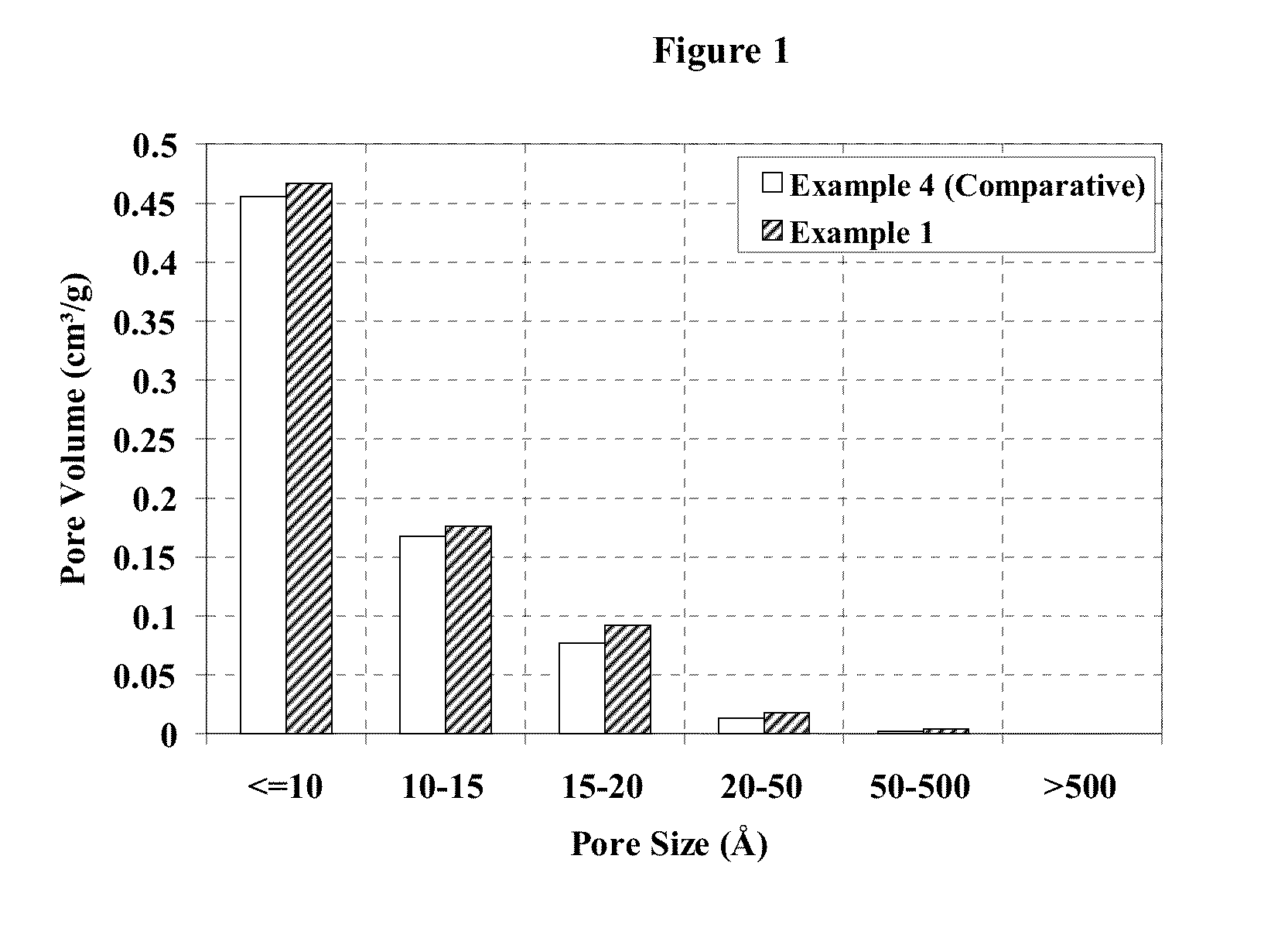Method for making alkali activated carbon
a technology of activated carbon and alkali, which is applied in the field of activation of carbon via alkali activation process, can solve the problems of limited charge cycling ability, complicated use of batteries in many new applications, and relatively slow discharge rate, so as to reduce process costs, enhance process safety, and minimize the absolute amount of alkali metal in the furnace
- Summary
- Abstract
- Description
- Claims
- Application Information
AI Technical Summary
Benefits of technology
Problems solved by technology
Method used
Image
Examples
example 1
[0035]A carbon powder, which was derived by carbonizing wheat flour at 800° C. in N2 and milling the resulting char to d50˜5 microns, was mixed with a KOH powder (Sigma-Aldrich Cat. No. 06103) at a ratio of 1:2.2 (w / w). The carbon / KOH mixture was contained in SiC crucibles and loaded into a box furnace. The furnace temperature was ramped up at 150° C. / hr to 750° C., held at 750° C. for 2 hours, and then allowed to cool down naturally to room temperature. The furnace was purged with N2 throughout the thermal cycle. When the furnace temperature reached 400° C. during ramp-up, water vapor was introduced to the furnace by bubbling N2 through deionized (DI) water at room temperature. The water vapor concentration in the furnace atmosphere was estimated to be 1.5%. This water introduction was later stopped when the furnace temperature reached 300° C. during cool-down and the furnace was purged with neat N2 until the furnace temperature reached 70° C. or lower when the furnace was unloaded...
example 2
[0036]Same as Example 1 except that the water vapor concentration in the furnace atmosphere was 7.1%. No signs of reaction related to metallic potassium were observed when the material was exposed to ambient air.
example 3
[0037]Same as Example 1 except that the water vapor concentration in the furnace atmosphere was 33%. No signs of reaction related to metallic potassium were observed when the material was exposed to ambient air.
PUM
| Property | Measurement | Unit |
|---|---|---|
| temperature | aaaaa | aaaaa |
| threshold temperature | aaaaa | aaaaa |
| threshold temperature | aaaaa | aaaaa |
Abstract
Description
Claims
Application Information
 Login to View More
Login to View More - R&D
- Intellectual Property
- Life Sciences
- Materials
- Tech Scout
- Unparalleled Data Quality
- Higher Quality Content
- 60% Fewer Hallucinations
Browse by: Latest US Patents, China's latest patents, Technical Efficacy Thesaurus, Application Domain, Technology Topic, Popular Technical Reports.
© 2025 PatSnap. All rights reserved.Legal|Privacy policy|Modern Slavery Act Transparency Statement|Sitemap|About US| Contact US: help@patsnap.com

